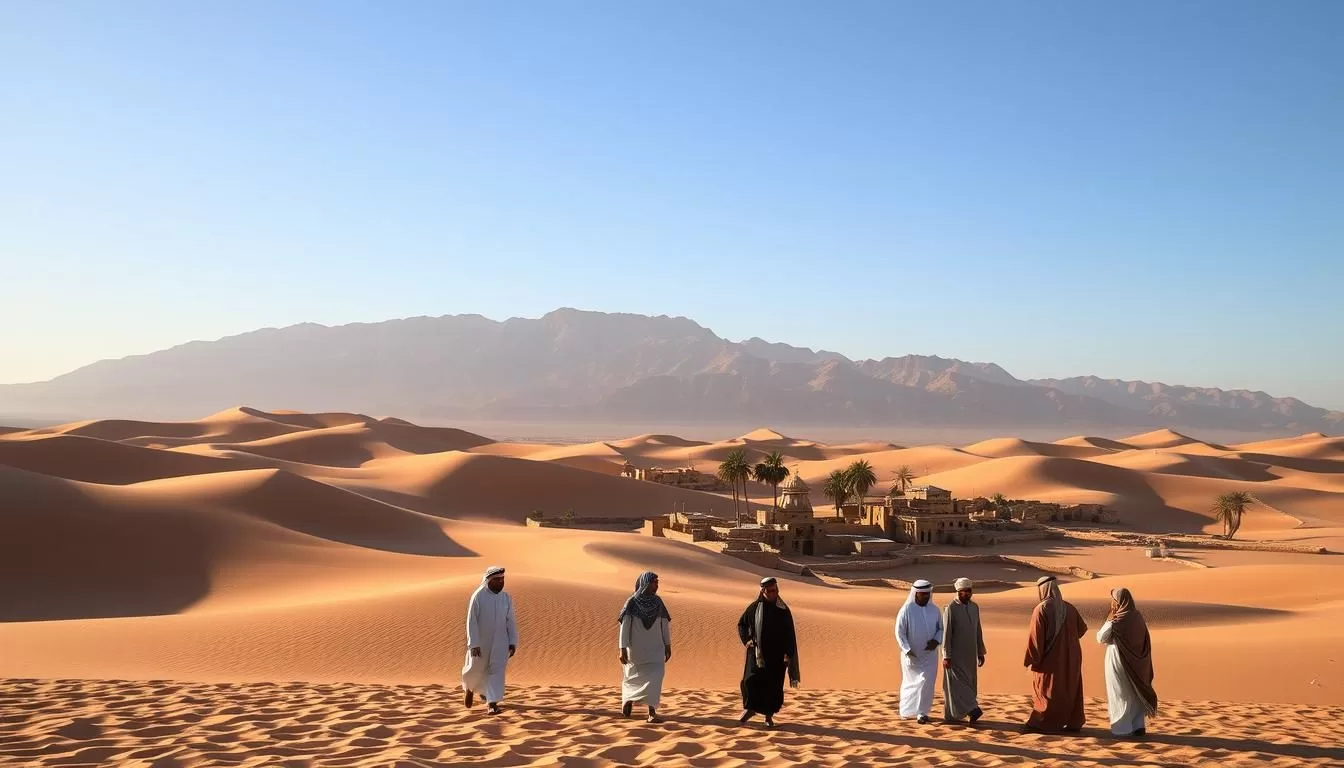✓ Accommodations✓ Flights✓ Rental Cars✓ Tours & Activities
In this country, Arabic is the primary language, deeply rooted in its culture and daily life. It serves as the official means of communication in government, education, and business. For most citizens, it’s their mother tongue, reflecting the nation’s rich heritage.
The region is home to diverse dialects, including Najdi and Hejazi, each with its unique characteristics. These variations highlight the linguistic diversity within the country. Modern Standard Arabic, derived from Classical Arabic, is widely understood and used in formal settings.
Understanding these linguistic nuances can give you deeper insight into the cultural fabric of this nation. Whether you’re exploring its history or engaging with locals, knowing the role of Arabic is essential.
Overview of Linguistic Diversity in Saudi Arabia
Language plays a pivotal role in reflecting the cultural and demographic fabric of this society. The diverse population contributes to a rich linguistic landscape, where dialects and traditions intertwine. This section explores how language shapes cultural identity and is influenced by demographic dynamics.
Cultural Significance of Language
Arabic, as the official language, is deeply rooted in the cultural heritage of this region. It serves as a unifying force, connecting communities through shared traditions and values. The study included 20 semi-structured interviews, highlighting the importance of Arabic in defining national identity.
From poetry to daily conversations, language reflects the soul of the culture. It’s not just a means of communication but a vessel for preserving history and traditions. The increasing presence of English among the youth signifies a shift towards global competitiveness.
Demographic Influences on Language Usage
Demographics play a key role in shaping language practices. With a diverse population, dialects like Najdi and Hejazi flourish, each with unique characteristics. The study analyzed 210 images and 450 shop signs, revealing a preference for Arabic in bilingual signs.
Urban areas often see a blend of languages, reflecting the influence of expatriates and global trends. For instance, English is predominant in monolingual signs, catering to international visitors. This dynamic interplay ensures that language remains a living, evolving entity.
| Language | Usage Context | Demographic Influence |
|---|---|---|
| Arabic | Official communication, education | Local population |
| English | Business, tourism | Expatriates, youth |
| Regional Dialects | Daily conversations | Local communities |
Historical Roots of the Arabic Language
The roots of the Arabic language stretch deep into history, shaped by early civilizations. Its development reflects the rich heritage of the region, influenced by diverse cultures and traditions. Understanding these origins helps you appreciate its role as a cornerstone of communication today.
Early Pre-Islamic Linguistic Influences
Before the rise of Islam, the Arabian Peninsula was home to various cultures, each contributing to the evolution of Arabic. Ancient tongue forms, such as Proto-Arabic, laid the foundation for the language we know today. These early dialects were shaped by trade, poetry, and tribal interactions.
The Nabatean script, dating back to the 5th century CE, played a crucial role in the development of written Arabic. This script evolved into the modern Arabic alphabet, which remains in use today. The interplay between spoken and written forms highlights the dynamic nature of language development.
Arabic’s connection to cultural identity is evident in its preservation of ancient traditions. Poetry, for instance, served as a medium for storytelling and cultural expression. These early influences continue to shape the language’s structure and usage.
| Period | Key Development | Impact |
|---|---|---|
| Pre-Islamic Era | Proto-Arabic dialects | Foundation of modern Arabic |
| 5th Century CE | Nabatean script | Evolution of written Arabic |
| 7th Century CE | Islamic Conquests | Spread of Arabic globally |
By exploring these historical roots, you gain insight into how Arabic became a unifying force in the region. Its ancient origins continue to influence its modern form, making it a vital part of the world’s linguistic heritage.
Evolution from Classical to Modern Standard Arabic
The journey of Arabic from its classical roots to modern usage is a fascinating evolution. Over centuries, it has adapted to meet the needs of a changing world. This transformation reflects the cultural, technological, and economic shifts in the region.
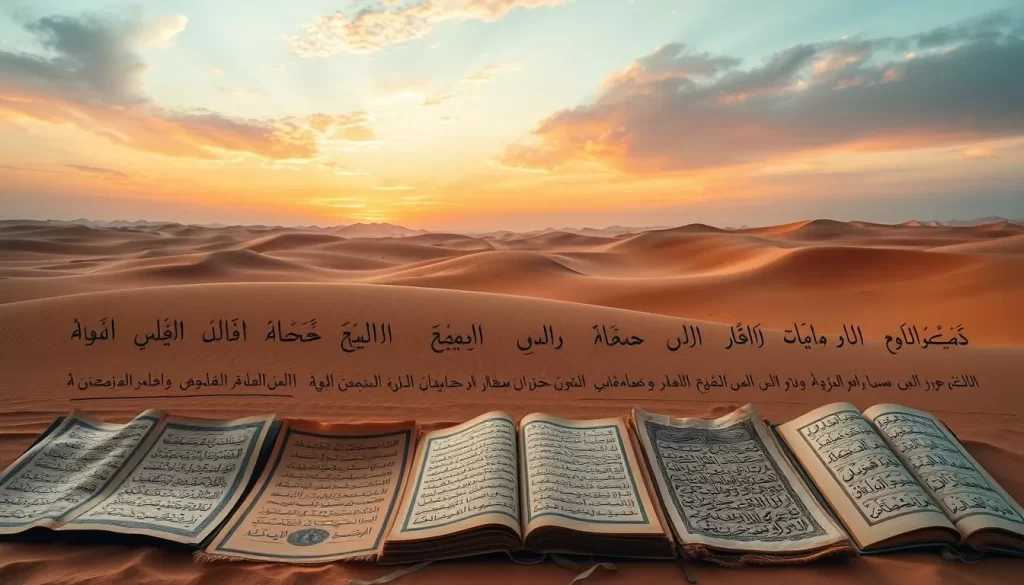
Transition from Classical Arabic Traditions
Classical Arabic, rooted in religious and historical texts, has been a cornerstone of the language. Its origins trace back over 1,000 years, with significant development between the 3rd and 6th centuries C.E.. This form of Arabic remains vital in religious practices and cultural preservation.
Traditional aspects of Classical Arabic persist in poetry, literature, and daily prayers. These elements highlight its enduring influence on the region’s identity. Despite modernization, Classical Arabic continues to inspire reverence and respect.
Adoption of Modern Standard Arabic
Modern Standard Arabic (MSA) emerged in the early 19th century, shaped by increased contact with the Western world. Today, it is the version taught in schools and used in media, government, and business. MSA serves as a unifying language across the Persian Gulf and beyond.
In the oil industry, MSA plays a crucial role in communication and documentation. Its use in economic sectors underscores its importance in global trade. The language’s adaptability ensures its relevance in a rapidly changing world.
While MSA is widely understood, regional dialects remain prevalent in daily conversations. These variations reflect the linguistic diversity of the region. Understanding both MSA and local dialects is key to effective communication.
“Language is the road map of a culture. It tells you where its people come from and where they are going.”
| Language Form | Usage Context | Influence |
|---|---|---|
| Classical Arabic | Religious texts, literature | Cultural preservation |
| Modern Standard Arabic | Media, education, business | Unifying communication |
| Regional Dialects | Daily conversations | Local identity |
The evolution of Arabic showcases its resilience and adaptability. From ancient traditions to modern innovations, it continues to shape the cultural and economic landscape of the Persian Gulf.
Official Language: Arabic in Saudi Arabia
Arabic serves as the cornerstone of communication in government, education, and media across the region. Its role extends beyond daily interactions, shaping policy-making, curricula, and cultural identity. This section delves into how standard Arabic functions in official sectors and its impact on society.
Role in Government and Education
In government institutions, standard Arabic is the primary language for legislation, official documents, and public announcements. This ensures consistency and clarity in policy-making. In cities like Riyadh, it fosters unity among diverse communities.
Educational systems across the Arabian Peninsula prioritize Arabic in curricula. Students learn it as their first language, ensuring its preservation for future generations. This emphasis reinforces its status as a unifying force in the region.
Impact on Media and Literature
Media platforms, from television to newspapers, rely on standard Arabic to reach a broad audience. It bridges regional dialects, making content accessible to all. Literature, too, thrives in Arabic, with poets and authors using it to express cultural heritage.
In major cities, Arabic dominates billboards, advertisements, and public spaces. This visibility reinforces its role in daily life and national identity. The language’s adaptability ensures its relevance in a rapidly changing world.
| Sector | Role of Arabic | Impact |
|---|---|---|
| Government | Legislation, official documents | Policy clarity, unity |
| Education | Primary language in curricula | Cultural preservation |
| Media | Broadcasting, journalism | Accessibility, unity |
| Literature | Poetry, novels | Cultural expression |
Arabic’s influence in these sectors highlights its importance in shaping the region’s identity. Whether in government, education, or media, it remains a vital part of life across the Arabian Peninsula.
Regional Dialects in Saudi Arabia
Exploring the linguistic landscape reveals the rich tapestry of regional dialects. These variations not only define local identities but also contribute to the cultural richness of the region. Understanding these dialects offers a deeper connection to the people and their heritage.
Najdi Arabic Overview
Najdi Arabic is a prominent dialect spoken in the central region. It is divided into four sub-dialects, each reflecting the unique characteristics of its area. Northern Najdi, for instance, is spoken by the Shammar tribe and near the Syrian desert.
Urban Najdi, commonly heard in Riyadh, blends influences from Iraqi, Syrian, and Jordanian dialects. This diversity highlights the dynamic nature of language development in the region. Southern Najdi, though less common, remains significant among specific tribes.
Hejazi and Gulf Arabic Characteristics
Hejazi Arabic, spoken along the west coast, includes cities like Jeddah and Mecca. It is known for its distinct pronunciation and vocabulary, setting it apart from other dialects. Gulf Arabic, prevalent in the eastern region, is widely understood and used in Riyadh.
These dialects reflect rural versus urban differences, with Hejazi often associated with coastal cities and Gulf Arabic tied to the eastern Gulf region. Interactions with neighboring dialects, such as Egyptian Arabic, have further shaped their evolution.
| Dialect | Region | Key Features |
|---|---|---|
| Najdi Arabic | Central Region | Four sub-dialects, influenced by neighboring cultures |
| Hejazi Arabic | West Coast | Distinct pronunciation, coastal influence |
| Gulf Arabic | Eastern Region | Widely understood, urban focus |
Regional dialects play a vital role in the linguistic diversity of the area. They reflect historical interactions and cultural exchanges, enriching the language landscape. This part of the region’s heritage continues to evolve, shaped by both tradition and modern influences.
Saudi Arabia: Official and widely spoken languages
Everyday life in the capital reflects the enduring influence of Arabic. From morning greetings to evening conversations, it shapes how people connect. This language is not just a tool for communication but a cornerstone of cultural identity.
In formal settings, Arabic is the backbone of governance and education. It ensures clarity in official documents and unites diverse communities. In the capital, this is especially evident, where it bridges urban and rural divides.
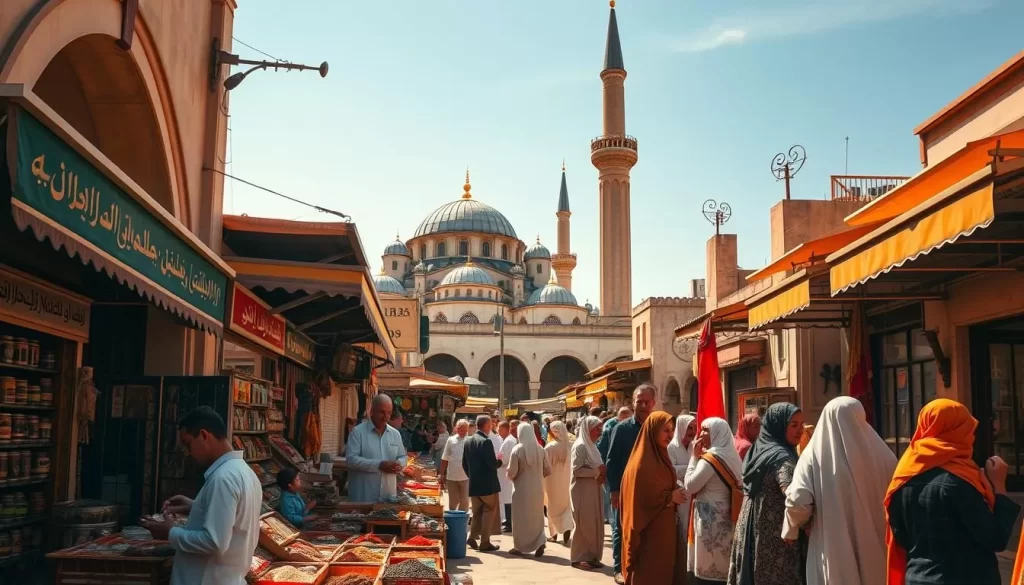
For younger generations, Arabic is a link to tradition while adapting to modern needs. Schools emphasize its importance, ensuring it remains a vital part of their day. This balance between heritage and progress keeps the language alive and relevant.
Regional dialects add richness to the linguistic landscape. In the capital, you’ll hear Gulf Arabic, a dialect that blends influences from neighboring regions. These variations highlight the diversity within the language itself.
Whether you’re a local or a visitor, understanding Arabic enhances your experience. It opens doors to deeper connections and insights into the culture. As a speaker of this language, you become part of a shared heritage that spans generations.
Minority Languages and Expat Community Contributions
The linguistic diversity in the region is enriched by the contributions of expatriates and minority communities. These groups bring their native languages, such as Tagalog, Urdu, and Rohingya, creating a vibrant linguistic mosaic. This section explores how these languages coexist with Arabic and their role in shaping the cultural landscape.
Languages of the Expatriate Population
Expatriates make up over 30% of the population, adding a layer of linguistic diversity. Tagalog, spoken by Filipino workers, and Urdu, common among South Asian communities, are widely heard in urban areas. These languages are not just spoken at home but also in workplaces and social gatherings.
In schools, children of expatriates often learn their native languages alongside Arabic and English. This dual-language practice helps preserve cultural heritage while fostering integration. For instance, private institutions offer courses in Tagalog and Urdu, ensuring these languages thrive in the next generation.
Businesses also benefit from this linguistic diversity. Multinational companies often hire bilingual staff to bridge communication gaps. This practice enhances efficiency and fosters cross-cultural understanding.
“Language is the key to understanding culture. It opens doors to new perspectives and connections.”
Here’s a quick overview of how minority languages contribute to the region:
- Tagalog: Widely spoken by Filipino workers, used in households and workplaces.
- Urdu: Common among South Asian communities, taught in some schools.
- Rohingya: Preserved by refugee communities, a symbol of resilience.
These languages not only enrich the cultural fabric but also play a significant role in the economy. From domestic workers to professionals, expatriates bring skills and traditions that shape the region’s identity. Their contributions ensure that linguistic diversity remains a cornerstone of society.
The Role of Language in Saudi Arabian Culture
Language serves as a bridge between faith, tradition, and modern cultural expressions in the region. It is deeply intertwined with religious practices, shaping how people connect with their heritage and each other. Arabic, as the language of the Quran, plays a central role in guiding both spiritual thought and daily life.
Interplay Between Religion and Language
Arabic is not just a means of communication; it is a vessel for religious expression. From daily prayers to Quranic recitations, the language fosters a sense of unity among believers. This connection is evident in how religious gatherings and educational settings prioritize Arabic as a marker of identity.
In the business world, this interplay extends to how language reflects cultural values. For instance, indirect communication styles, preferred by 70% of the population, align with the region’s emphasis on respect and harmony. This approach ensures that interactions remain respectful and culturally appropriate.
Language also acts as a unifying force in diverse communities. Whether in urban centers or rural areas, Arabic connects people through shared traditions. This unity is particularly evident during religious festivals, where poetic expressions and traditional greetings are common.
| Aspect | Role of Language | Impact |
|---|---|---|
| Religious Practices | Quranic recitations, prayers | Spiritual unity |
| Cultural Identity | Poetry, traditional greetings | Preservation of heritage |
| Business Communication | Indirect styles, respect | Harmonious interactions |
Understanding the role of language in this region offers a deeper appreciation of its cultural fabric. It highlights how Arabic connects faith, tradition, and modern practices, making it a cornerstone of daily life. For more insights, explore how Arabic is the official language of Saudi and its significance in shaping the nation’s identity.
Language in Education and Business
Mastering the Arabic language opens doors to both education and business opportunities in the Middle East. From classrooms to boardrooms, it plays a pivotal role in shaping careers and fostering cultural connections. Whether you’re a student or a professional, understanding its significance can enhance your growth.
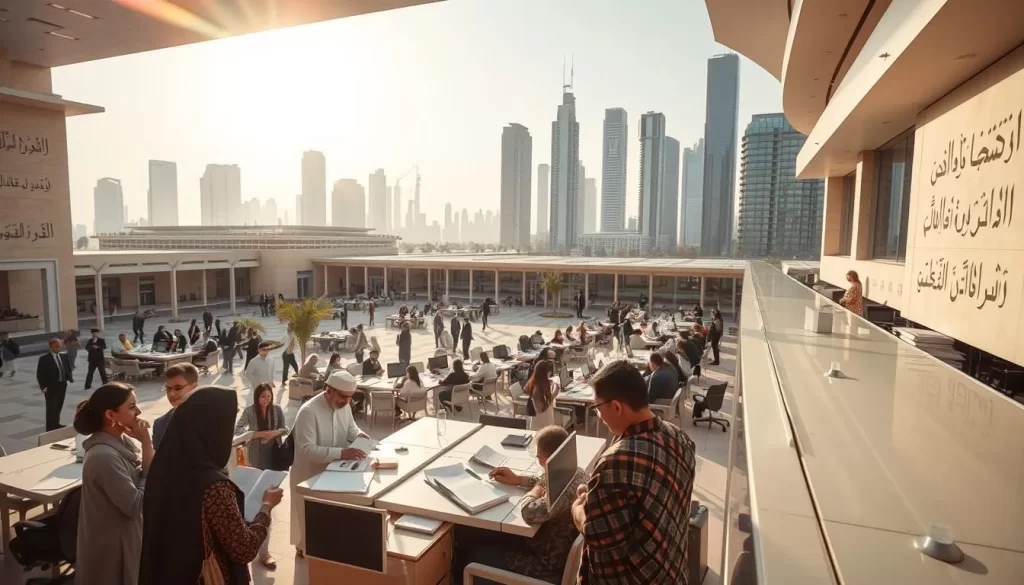
In schools and universities, Modern Standard Arabic is the foundation of learning. It’s used in curricula to ensure students connect with their heritage while preparing for global challenges. For instance, the Preparatory Year Program (PYP) emphasizes English as a foreign language, but Arabic remains the primary medium for instruction.
Businesses in the Middle East also rely on Arabic for official communications. However, English is often used in international trade and technology sectors. This balance allows professionals to navigate both local and global markets effectively. Studies show that bilingual employees are more likely to receive promotions or job offers.
Here’s how language skills benefit you:
- Education: Proficiency in Arabic ensures academic success and cultural preservation.
- Business: Bilingualism enhances communication and opens doors to international opportunities.
- Career Growth: Mastering both languages increases your value in competitive markets.
For more insights on how language shapes professional success, explore this detailed study. It highlights the growing influence of English in the region while emphasizing the enduring importance of Arabic.
Media, Technology, and Language Preservation
Technology is reshaping how Arabic is learned and preserved across the arab world. From apps to social media, digital platforms are making language learning more accessible and engaging. These tools are not just for students but for anyone interested in mastering gulf arabic or other dialects.
The government and private sector are playing key roles in supporting these initiatives. For example, the King Salman Global Academy for Arabic Language in Riyadh is utilizing artificial intelligence to enhance interactions with the Arabic language. This includes tools for language learning and speech recognition, aligning with broader goals to elevate the global status of Arabic.
Popular apps like Duolingo and Memrise offer courses in Modern Standard Arabic, while platforms like YouTube feature content in regional dialects. These resources cater to diverse learning needs, ensuring that Arabic remains vibrant and accessible to future generations.
Digital Platforms Enhancing Arabic Learning
Digital platforms are transforming the way gulf arabic and other dialects are taught. Social media channels, such as Instagram and TikTok, are filled with educational content. Creators share lessons, cultural insights, and even slang, making learning both fun and practical.
Online forums and communities also play a significant role. Platforms like Reddit and Facebook groups connect learners with native speakers. This interaction fosters a deeper understanding of the language and its cultural context.
Here’s a quick look at how technology supports Arabic learning:
| Platform | Features | Impact |
|---|---|---|
| Language Apps | Interactive lessons, quizzes | Accessible learning for all ages |
| Social Media | Short videos, cultural insights | Engaging and relatable content |
| Online Communities | Discussion forums, Q&A | Real-time interaction with speakers |
These innovations ensure that Arabic remains a living, evolving language. Whether you’re in the arab world or abroad, technology bridges the gap between tradition and modernity. For more insights, explore how AI is transforming Arabic language preservation.
Language Policy and Government Influence
Government policies have shaped the linguistic landscape for centuries, ensuring Arabic remains central to public life. Since the nation’s unification, these policies have solidified its role in education, media, and daily communications.
In schools, Arabic is the mandatory medium of instruction, with foreign languages taught only as secondary subjects. This approach preserves cultural heritage while preparing students for global challenges. For example, English is introduced early but remains secondary to Arabic in curricula.
The royal family and government institutions have played a key role in promoting language uniformity. Policies like “Saudiization” aim to replace foreign workers with nationals, emphasizing Arabic fluency in both public and private sectors.
Over the last century, language policy has evolved to address modern challenges. Initiatives like the King Salman Global Academy for Arabic Language use technology to enhance learning and preserve linguistic purity.
“Language is the foundation of identity. It connects us to our past and guides our future.”
These policies foster cultural continuity while adapting to globalization. By prioritizing Arabic, the government ensures it remains a unifying force in a rapidly changing world.
Comparative Perspectives: Saudi Arabia and Its Neighbors
Understanding the linguistic systems of the Middle East reveals fascinating contrasts. The region saudi shares many language practices with its neighbors, yet it also boasts unique elements that set it apart. For instance, Hejazi Arabic is a distinct dialect spoken along the west coast, reflecting the area’s historical trade routes.
In the region saudi, language policies are deeply tied to cultural preservation. While neighboring countries like the UAE and Qatar also prioritize Arabic, the emphasis on Hejazi Arabic highlights the local identity. This focus ensures that regional dialects remain vibrant and relevant in daily life.
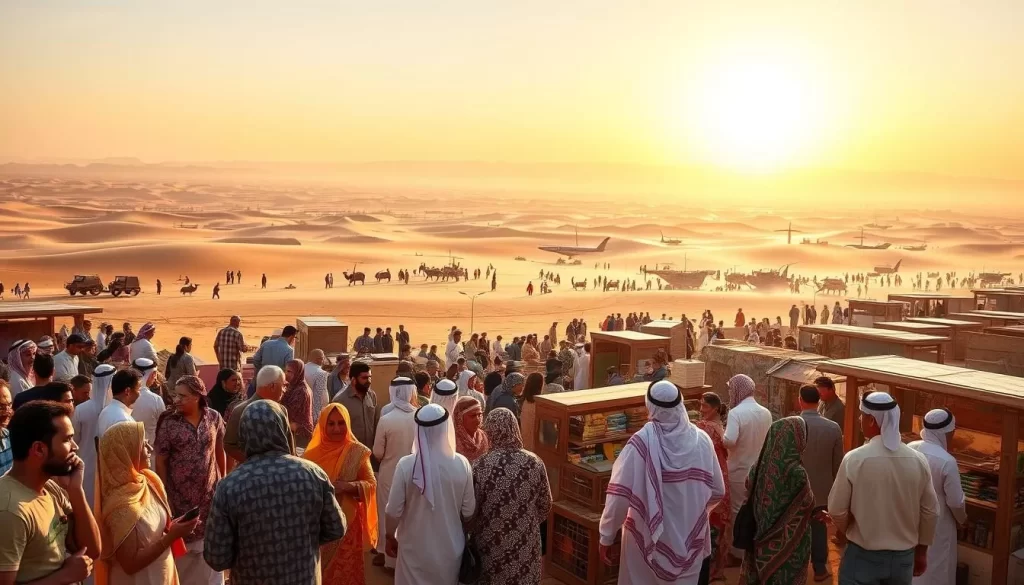
Government influence plays a significant role in shaping language practices. In the region saudi, policies like “Saudiization” aim to strengthen the use of Arabic in both public and private sectors. This contrasts with other Gulf nations, where English is more prevalent in business and education.
Cultural interconnectedness is evident in the shared use of Modern Standard Arabic across the Middle East. However, the system in the region saudi places a stronger emphasis on local dialects like Hejazi Arabic. This balance between unity and diversity enriches the linguistic landscape.
For more insights into how language attitudes shape cultural identity, explore this study on linguistic diversity. It highlights the role of education and media in promoting regional dialects while fostering unity.
Future of Languages in Saudi Arabia
The future of languages in this region is shaped by a blend of tradition and innovation. As globalization and technology advance, they bring both opportunities and challenges to the linguistic landscape. This section explores how these forces are reshaping language practices and dialects, particularly najdi arabic and other forms of arabic spoken in the region.
Emerging Trends in Language Development
One of the most significant trends is the integration of technology into language learning. Digital platforms are making it easier for people to learn and preserve najdi arabic and other dialects. Apps and online courses are becoming popular tools for both locals and expatriates.
Another trend is the growing emphasis on bilingualism in education. Schools are increasingly incorporating English into their curricula while maintaining a strong focus on Arabic. This approach ensures students are prepared for global opportunities without losing their cultural identity.
Influence of Globalization on Dialects
Globalization is having a profound impact on local dialects. While najdi arabic remains widely spoken, it is evolving with influences from other languages and cultures. This blending of linguistic elements is creating new forms of expression.
However, this also raises concerns about the preservation of traditional dialects. Efforts are being made to document and promote these languages through media and education. For example, regional TV shows and radio programs are helping to keep dialects alive.
“Language is the key to understanding culture. It opens doors to new perspectives and connections.”
Here’s a quick overview of how globalization is shaping language trends:
| Trend | Impact | Example |
|---|---|---|
| Technology Integration | Accessible learning tools | Language apps, online courses |
| Bilingual Education | Global readiness | English in schools |
| Dialect Evolution | New linguistic forms | Blended expressions |
For more insights into how language attitudes shape cultural identity, explore this study on linguistic diversity. It highlights the role of education and media in promoting regional dialects while fostering unity.
Challenges and Opportunities in Language Development
Balancing tradition with innovation is a key challenge in language development today. As urbanization accelerates, the uniformity of dialect arabic faces fragmentation. This creates hurdles in preserving linguistic heritage while adapting to modern needs.
One major challenge is the impact of urbanization on dialect arabic. As cities grow, regional variations often blend, leading to a loss of distinct linguistic identities. This shift can dilute the richness of local dialects, making it harder to maintain cultural authenticity.
Despite these challenges, there are significant opportunities to enhance language education. Schools and institutions are increasingly adopting modern standard practices to bridge gaps between traditional and contemporary language use. This approach ensures that learners can navigate both local and global contexts effectively.
Efforts by educators, government bodies, and community leaders play a crucial role in addressing these issues. For example, initiatives to document and promote regional dialects are helping to preserve linguistic diversity. These programs often integrate modern standard tools to make learning more accessible and engaging.
“Language is the foundation of identity. It connects us to our past and guides our future.”
Another opportunity lies in the coexistence of modern standard trends with local dialects. By embracing both, communities can ensure that their linguistic heritage remains vibrant while staying relevant in a globalized world. This balance fosters unity without sacrificing diversity.
For those interested in understanding the role of education in overcoming these challenges, explore this detailed study. It highlights how updated teaching methods and real-life language application can enhance language acquisition.
In conclusion, the ever-changing language landscape presents both challenges and opportunities. By addressing fragmentation and promoting unity, we can ensure that dialect arabic and modern standard practices thrive together. This approach not only preserves cultural identity but also opens new avenues for growth and preservation.
Conclusion
Language remains a powerful tool that connects people across generations and cultures. In this community, Arabic stands as a unifying force, bridging the past and the present. From education to media, it plays a central role in shaping daily life and preserving heritage.
As society evolves, challenges and opportunities arise in maintaining linguistic traditions. The rise of English as a second language reflects global influences, yet Arabic continues to thrive as a symbol of identity. Workers in various sectors rely on it to communicate and collaborate effectively.
Over time, language has proven to be a dynamic, living entity. It adapts to modern needs while honoring its roots. By appreciating this balance, you can better understand the cultural richness it brings to every community.
The above is subject to change.
Check back often to TRAVEL.COM for the latest travel tips and deals.
